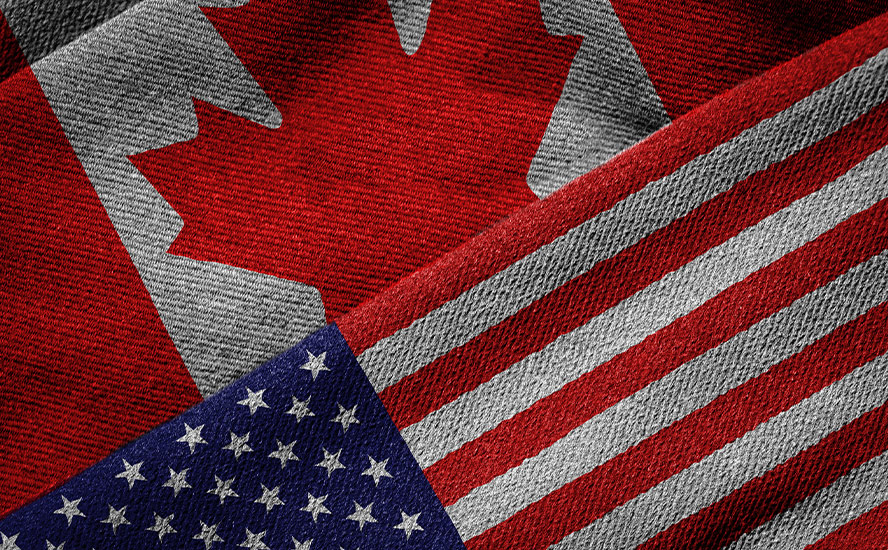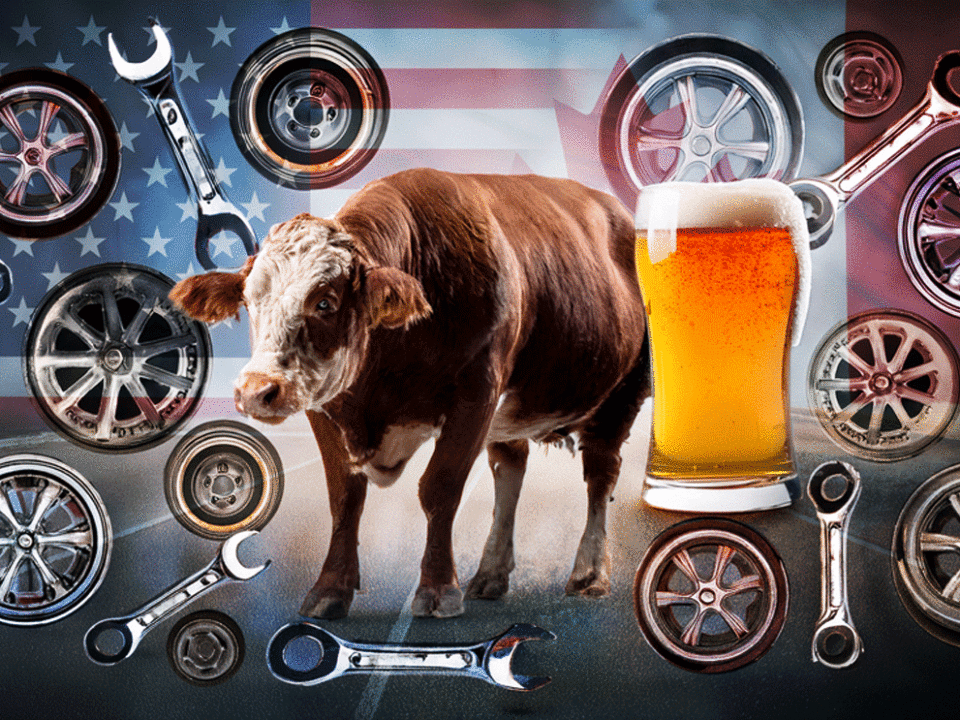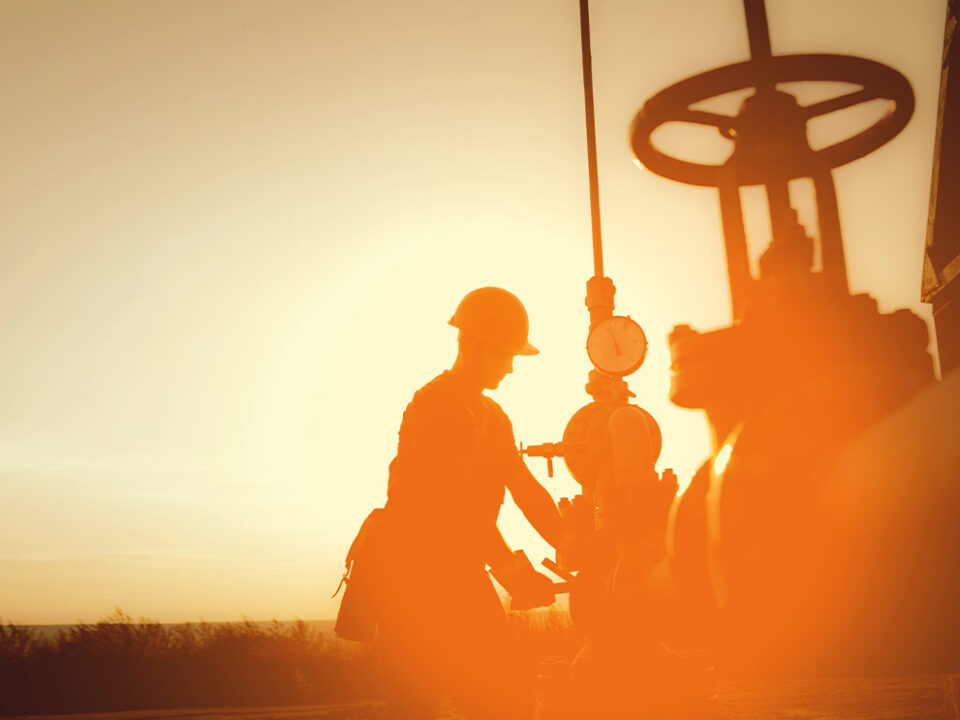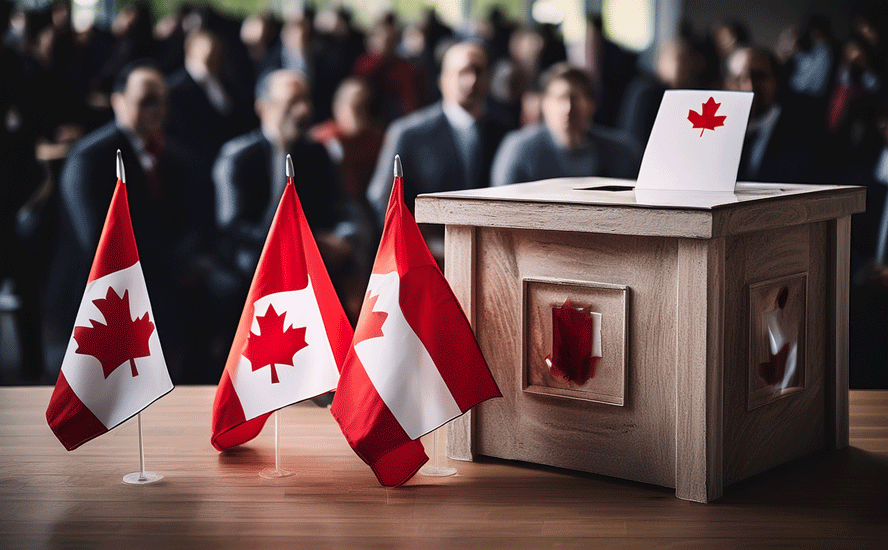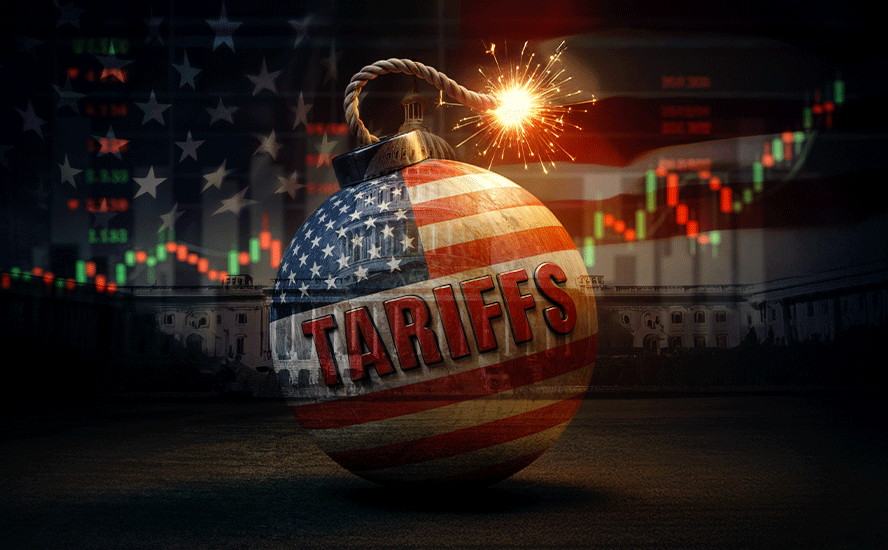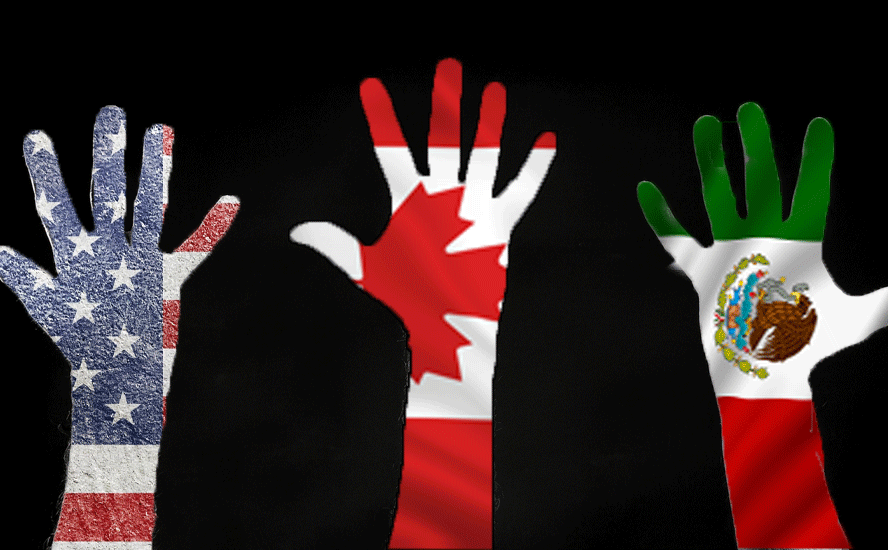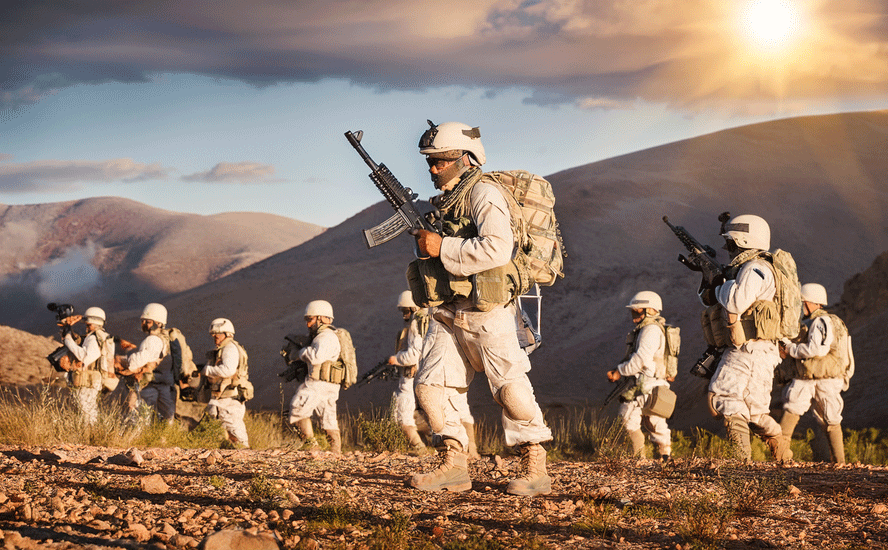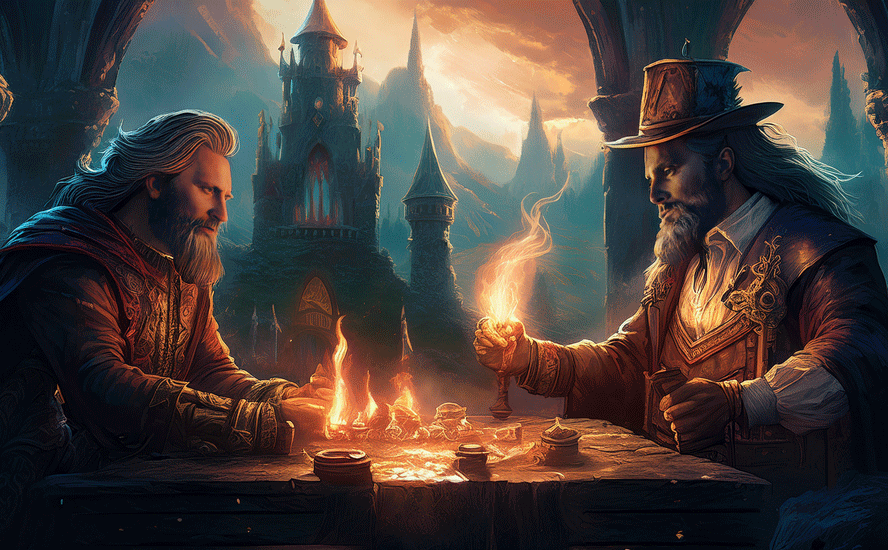America: the good, the bad and the ugly
2023.04.19
Most people can remember what they were doing on the blue bird morning of September 11th, 2001, when two hijacked airplanes slammed into the World Trade Center, a third flew into the Pentagon, and a fourth crashed in a Pennsylvania field.
On the 20th anniversary of 9/11, Canada’s former transportation minister, David Collenette, said “his stomach dropped” after reading a note passed to him by an aide during a speech in Montreal, informing him of the tragedy unfolding in New York.
Nearly 3,000 people are known to have died on 9/11, including 24 Canadians, making it the deadliest terrorist attack in world history.
Among those killed were 403 first responders — 343 firefighters and paramedics, and 60 NYPD and Port Authority police officers. The two burning towers stood for 56 minutes and 102 minutes, respectively, then took just 12 seconds to fall. For more read The Encyclopedia of 9/11, by New York Magazine.
Despite the horrendous attack — many victims’ bodies were never found and some, trapped above the 90th floor, leapt to their deaths rather than stay and be burnt alive — 9/11 is remembered as a time when Americans rallied around a common cause, i.e., the 19 terrorists with al-Qaida, an Islamist extremist group led by Osama bin Laden, and the group that gave them sanctuary, the Taliban in Afghanistan.
Most Canadians had deep sympathy for Americans during and following the first attack on American soil since Pearl Harbor.
When US airspace was closed that day, Canada welcomed 224 international flights, in an effort that became known as Operation Yellow Ribbon.
In all about 30,000 passengers were re-routed to Canadian airports, including Gander, Newfoundland. The tiny town of 10,000 sheltered more than 6,500 people in the days that followed, creating cross-border relationships that thrive to this day, and spawning the popular musical ‘Come From Away’.
John Manley, then foreign affairs minister, said he believes the attacks helped to unify Canada in a spirit of compassion for our southern neighbors:
“I think this touched people deeply to their core, I mean everyone imagined what it must have been like for the people in the planes and the people in the World Trade Center who were going about their business,” he said.
“But Canadians, generally, were welcoming and taking care of people and responding, as they would to a friend or neighbour; so I think it was that sense of commonality that this could have been me.”
9/11 was obviously an extreme an event that helped to crystallize commonality between our two nations; we saw the same thing during World War II and the Korean War; Canadians and Americans fought and died together as North American brothers-in-arms.
During peacetime, however, Canadians generally exude diffidence, not warmth, when approaching the bilateral relationship.
While our countries have much in common, including speaking the same language, eating many of the same foods, having the same taste in entertainment, working in the same sorts of jobs, and celebrating most of the same holidays (as per The Canada Guide), many Canadians look for reasons why they are unlike Americans, and define their identities accordingly:
Judging, teasing and even hating America is a central part of the Canadian identity, and forms a persistent bias that runs through most aspects of Canadian society and culture. For various reasons, the default position of a great many Canadians is that America, Americans, and American things are generally bad, and need to be opposed.
Indeed a pervasive anti-Americanism has seeped into Canadian culture and politics, represented by, for example, comedian Rick Mercer’s “Talking to Americans” skits, and the Molson beer ads featuring a ranting Canadian comparing Canada to the US that dramatically finishes with, “My name is Joe… and I AM CANADIAN!”
“American-style” medical care is routinely denounced by left of center politicians, in the same way that looser gun control is blasted. A 1988 federal campaign ad from the Liberal Party stridently opposed a plan for free trade with the United States being pushed by the Conservative Party, then led by Brian Mulroney. (their side lost)
So why do we do it? The most commonly held conclusion, again referencing The Canada Guide, is that by vilifying America, Canadians are able to create a collective identity for themselves. Others interpret Canadian history as being one long struggle against US domination. The idea here is that the United States is always on the brink of conquering Canada, if not militarily, then politically, culturally or economically, meaning Canadians must remain ever vigilant.
It may help those still trying to make up their minds about America, that there are three sides to this story: the good, the bad and the ugly.
Good
The United States continues to be the world’s greatest economic and military power, despite the progress over the last decade or so, of China in these areas.
The country has become the world’s largest petroleum producer, in 2022 producing 11.9 million barrels a day, compared to 11.5Mbbl from Saudi Arabia, in second place. The United States also consumes the most oil, at about 20Mbbl, when gasoline, distillate fuel oil, hydrocarbon gas liquids and jet fuel consumption are combined.
Though less than 5% of the world’s population lives in the US, it accounts for about 25% of global economic output. (The Economist notes that on one measure, what individuals can buy in their own country, China’s economy has been larger than America’s since 2016).
The more noteworthy figures show the degree to which America has extended its dominance over its developed-country peers. According to The Economist’s data, in 1990 the US accounted for 40% of the G7’s nominal GDP, versus 58% today. Income per capita was 24% higher than in western Europe in 1990, today it is about 30% higher. In Japan it was 17% higher in 1990, versus 54% higher today.
President Joe Biden is spending $2 trillion on remaking the economy, hoping to “build it back better”. As one recent article notes,
In the past two years Congress has passed three bills, on infrastructure, semiconductor chips and greenery, that will make $2trn available to reshape the economy. The idea is that, with government action, America can reindustrialise itself, bolster national security, revive left-behind places, cheer up blue-collar workers and dramatically reduce its carbon emissions all at the same time. It is the country’s most ambitious and dirigiste industrial policy for many decades.
American workers are generally more productive than in their peer countries. According to the Conference Board, US labor productivity (work production per hour) between 1990 and 2022 increased by 67% compared to 55% in Europe and 51% in Japan. So much for the workaholic Japanese and the efficient Germans.
More obviously, the financial markets in America are far more lucrative than elsewhere. The Economist says $100 invested in the S&P 500 in 1990 would be worth about $2,300 today. That same hundred dollars stuffed into an index of the biggest rich-world stocks that excluded American equities would have a value of just $510.
Finally, while America’s public school system often faces criticism, post-secondary-wise, the country ranks high; the United States has 11 of the world’s 15 top-ranked universities.
Regarding military prowess, China has gained on the United States over the years but it cannot match the US military’s fire power. According to Global Firepower estimates, via Statista, while the People’s Liberation Army has around 2 million active recruits compared to the US military’s 1.4 million, when it comes to the overall power of the world’s military forces, the US beats Russia and China, which come in at a respective second and third.

Beyond its economy and military, the United States has a lot going for it, some of which goes largely unrecognized. In a 2020 article, USA Today named “56 amazing things about America today”. Among the less obvious and most interesting, are the following:
- American athletes have won more Olympic medals than athletes from any other country.
- The only people to have walked on the moon’s surface were Americans.
- The United States is home to nearly 45 million immigrants – more than any other country in the world.
- New Census Bureau projections predict the United States will be “minority white” – 49.7% – by 2045.
- Much of the music the world listens to – jazz, rock ‘n’ roll, hip-hop, country, folk, R&B, soul, and gospel – comes out of the United States.
- There are more guns than people in the United States – about 101 for every 100 people, according to some estimates. The country with the next highest ownership rate is Serbia, where there are 58 guns for every 100 people.
- Over half of the U.S. population lives in just nine states: California, Texas, Florida, New York, Pennsylvania, Illinois, Ohio, Georgia, and North Carolina.
- The United States has been awarded more Nobel Prizes than any other country.
- Nine of the 10 largest companies in the world by market cap are based in the United States. Most of the top 100 companies by market cap (54) are American.
- CNBC reported the United States is home to by far more billionaires than any other country, with 705 – more than the next four countries combined. Seven of the world’s 10 richest people are American.
In September 2022 U.S. News published its Best Countries rankings, produced in partnership with the BAV Group and the Wharton School of Business in Pennsylvania. Based on a survey of 17,000 people in 85 countries, the United States was ranked fourth behind number one Switzerland, and numbers two and three, Sweden and Canada.
However the country is at or near the top in several sub-rankings, including No. 1 for both power and agility, No. 2 for entrepreneurship and No. 3 for cultural influence.

According to U.S. News, America’s improved perception abroad is linked in part to the change of president, quoting a June 2021 report from Pew Research Center showing that 75% of respondents from 12 surveyed nations had confidence in President Biden to do the right think in global affairs, compared to just 17% for President Trump.
The publication also notes that public demands to address racial inequality in the criminal justice system and health care have spurred similar movements in other countries; the US often takes a leading role in international organizations such as the UN, NATO and the World Bank; and provides the following quote:
The U.S. is culturally and racially diverse, and was shaped by large waves of immigration from Europe and beyond. American literature, art and music reflect the rich heritage of the country’s people. The U.S. is the birthplace of jazz, and Louis Armstrong, an African American, is one of the country’s most recognized and admired musicians. Prize-winning Jewish writers Saul Bellow and Philip Roth are some of the best known literary figures in the U.S. The media industry in the U.S. has a global audience, with its television shows, music videos and films distributed worldwide.
Bad
Following the 9/11 attacks, the US government launched its War on Terror, including the Iraq War, the war in Afghanistan and other military strikes, including the 2011 killing of Osama bin Laden.
The Patriot Act, passed by Congress in the weeks following September 11, significantly expanded the search and surveillance powers of federal law-enforcement and intelligence agencies. The act as amended and reauthorized in 2003, made numerous changes to existing statutes relating to the privacy of telephone and electronic communications, the operation of the Foreign Intelligence Surveillance Court, money laundering, immigration and other areas. It also defined a host of new crimes and increased penalties for existing ones. (Encyclopedia Britannica)
Critics charged that several parts of the act were unconstitutional or invited abuse by federal authorities. They also said that Sections 205 and 215 undermined the First Amendment freedoms of speech and association, and imposed gag orders without requiring judicial review.
In fact it was worse than that. The Patriot Act allowed the government to access library records, and law enforcement could enter homes and leave without telling citizens. In suburban Washington, federal agents swept through Islamic homes and businesses looking for ties to terrorist organizations.
The Stellar Wind program, run through the National Security Agency, in charge of electronic surveillance, was a warrant-less wiretapping operation involving large metadata collection and content originating in the American homeland. Envision metadata as a computer tracking every time a call is made, when it was made or received, and how long it lasted. Stellar Wind collected telephone communications of suspected Al-Qaeda members or affiliates; telephone and email metadata. The government claimed until the data was looked at, they were not in violation of the Fourth Amendment, which guarantees citizens the right to privacy in their homes and protects them against unreasonable search and seizure. (Source: ‘Turning Point: 9/11 and the War on Terror’, Netflix series)
While the Patriot Act expired on March 15, 2020, surveillance hasn’t stopped, despite the act being supplanted by the USA Freedom Act. According to one source, the 2015 Freedom Act, while an improvement on the Patriot Act, “still leaves a few loopholes allowing government surveillance with little to no proof of illegal or terrorist activity.”
As for America’s confrontational foreign policy post-9/11, it has left much to be desired. The United States originally planned to find those responsible for the terrorist attacks and bring them to justice. Instead, the country found itself mired in wars, first in Afghanistan then in Iraq.
According to a 2021 op-ed in The Boston Globe, “Ours have been wars of hatred, not logic, and doomed to fail — at a mind-boggling human and financial cost.”
One of author Jeffrey Sachs’ main points is that America has never cared to help those they have pretended to “save” by foreign interventions, including those in Vietnam, El Salvador, Nicaragua, Afghanistan or Iraq. Instead, the main motivation has been political or strategic, such as stopping leftist radicals who threatened American investments in Central America; or stopping communism and the so-called dominoes from falling in Southeast Asia.
Regarding US policy in the Middle East, Sachs writes, America didn’t want to save the Iraqis, Libyans, and Syrians; it wanted to topple regimes and replace them with US-backed regimes.
And America cared not a whit about Afghanistan, a point confirmed repeatedly by President Biden in recent days. Biden has noted, approvingly, that the United States went to Afghanistan for one reason and one reason only: to get Osama bin Laden and Al Qaeda after 9/11, not to help the people of Afghanistan.
(For a look at the US military’s failed policy of counter-insurgency in Afghanistan, referring to the attempt to win civilian loyalty, watch this recent PBS Frontline documentary)
The prof at Columbia University also believes that America’s right-wing culture has often been hostile toward the non-European world — the “shithole countries” in Donald Trump’s disgusting yet telling phrase. For the past 60 years, the United States has waged war after war for America’s narrow interests alone, and has created havoc, destruction, and death in its wake.
Turning to the domestic scene, while it’s true that Americans are getting richer because they are getting more productive compared to other peer rich countries, this comes with heavy costs. One is volatility in individual livelihoods; a second is inequality. The Economist writes:
Unemployment soars during downturns. Vast numbers end up chucked to the side: a combination of drugs, gun violence and dangerous driving has led to a shocking decline in average life expectancy in America. [Americans born today can expect to live to 77, about five years shorter than their developed-economy peers]. This suffering is concentrated among the country’s poorest, most marginalised communities.
In a previous article we analyzed the hollowing out of the US middle class, due to rising inequality. A 2021 Pew Research Center report found that 50% of American adults lived in middle-income households, down from 54% in 2001, 59% in 1981, and 61% in 1973. These stats are alarming because the middle class has historically been the engine of American economic growth and prosperity, yet over the past five decades it has shrunk.

The middle class has been decreasing both in terms of its share of the population, and its slice of the total income pie.
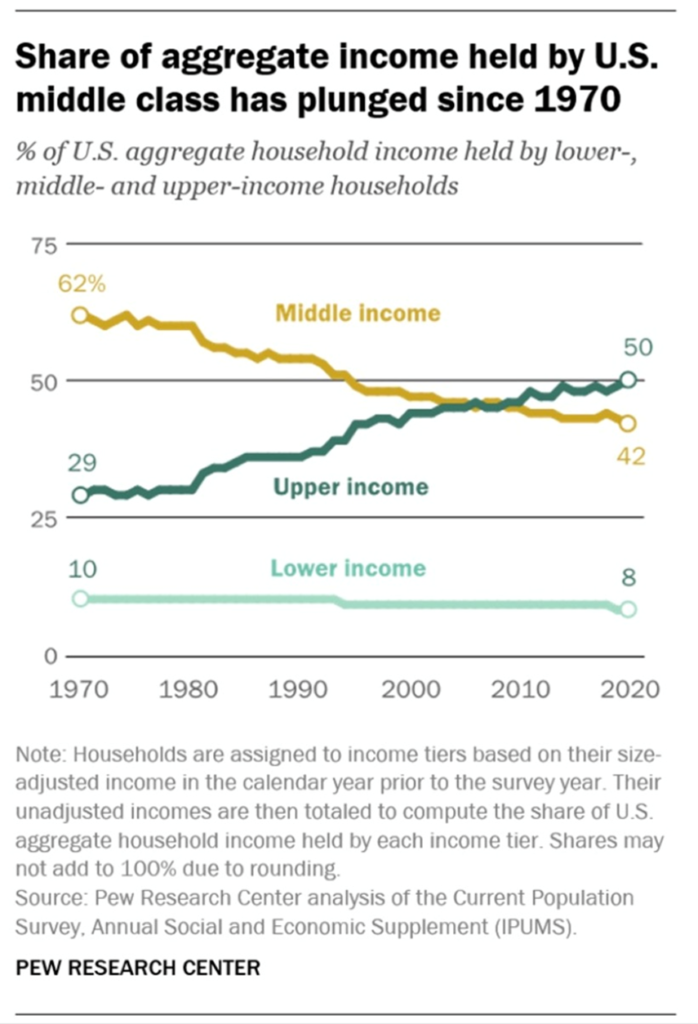
Perhaps the most interesting part of the Pew report was its finding that the middle class is shrinking not only because more people are poor, but because more people are rich.
Since 1971, the percentage of lowest-income earners has grown four percentage points, from 25% to 29% of the population. Over that same period, the percentage of Americans in the highest-income households rose seven percentage points, from 14% to 21% of the population.
According to Pew, the median income for lower-income households grew slower than that of middle-class households, increasing from $20,604 in 1970 to $29,963 in 2020, or 45%. The rise in income from 1970 to 2020 was steepest for upper-income households. Their median income increased 69% during that time span, from $130,008 to $219,572. In 2020, the median income of upper-income households was 7.3 times that of lower-income households, up from 6.3x in 1970.
The median income of upper-income households was 2.4x that of middle-income households in 2020, up from 2.2x in 1970.
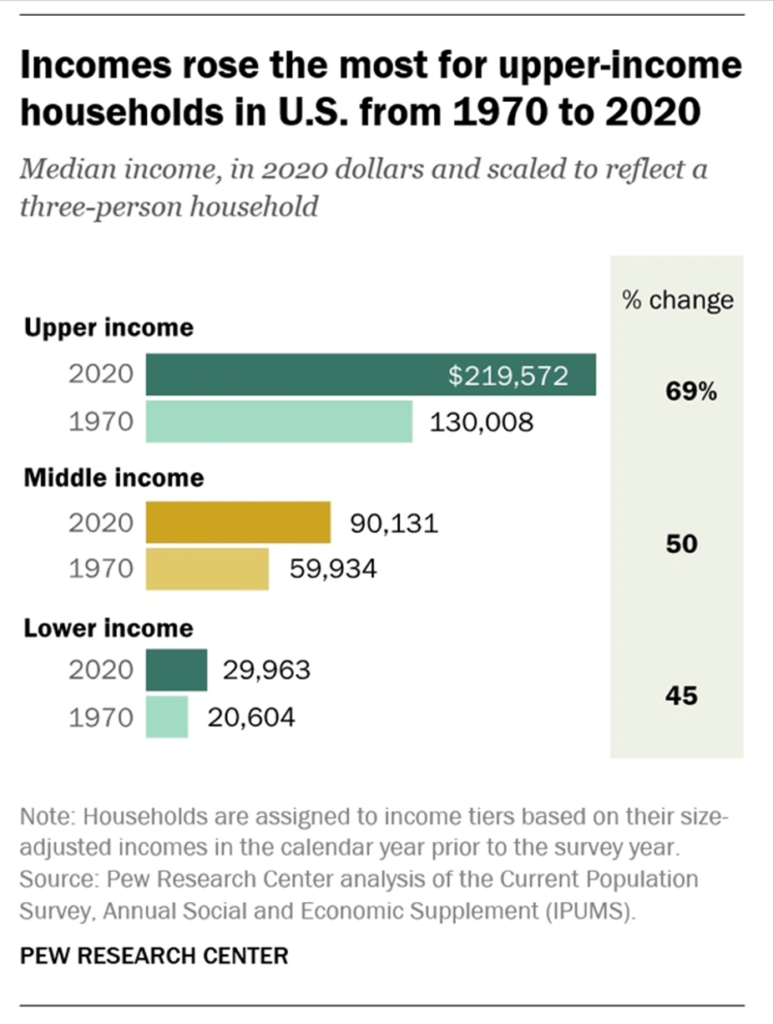
Taking just the last decade, the data shows that from 2010 to 2020, the median income of the upper class increased 9%, while the median income of the middle and lower classes climbed by only 6%.
Investopedia observes that, If we take a longer view — say, from 2000 to 2021 — we see that only the income of the upper class has recovered from the previous two economic recessions. Upper-class incomes were the only ones to rise over those twenty years.
This segmented rise has contributed to an ongoing trend since the 1970s of the divergence of the upper class from the middle and lower classes. In another piece, Pew reported that the wealth gaps between upper-income families and middle- and lower-income families were at the highest levels ever recorded.
Another problem in America is the declining fertility rate. Less babies being born means the country needs higher immigration levels, which goes up against a rising current of nativism — something Trump encouraged and even drafted policies around, such as building a wall on the Mexico-US border and banning travel from certain Muslim countries.
The Economist notes that Biden has kept many of Trump’s border policies in place, with authorities expelling at least 2 million illegal migrants on his watch.
Extreme political polarization at the federal level, between Democrats and Republicans in the House and Senate, has trickled down to the state legislatures and is starting to endanger the country’s unified market. Examples include Florida Governor Ron DeSantis using his office to try and humble Disney and its “woke agenda”, and California coming out with a new law that could force oil firms to cap their profits.
U.S. News agrees that, Despite being the foremost global power, the U.S. still faces domestic challenges, including racial tensions, income inequality and an increasingly polarized electorate. All of these fissures were on display during Trump’s presidency… While national security is a concern, so too, is the debt incurred from wars and expenditures on an aging population.
The US debt to GDP ratio in 1982 was around 35%. Today it is more than three times higher, at 120%.
This severely limits how much and how quickly the Fed can raise interest rates, due to the amount of interest that the federal government will be forced to pay on its debt.
Each interest rate rise means the federal government must spend more on interest. That increase is reflected in the annual budget deficit, which keeps getting added to the national debt, now sitting at a staggering $31.6 trillion.


Ugly
Onto the worst aspects of America, the United States leads the developed world in deaths due to firearms. The country also continues to be plagued by two epidemics, opioid addiction and obesity.
The murder rate in 2020 was 6.5%, meaning that 6,500 of 100,000 people were murdered that year, a startling 28.6% increase from 2019.
According to ABC News, more than 11,500 people have been killed in gun violence so far this year, with over half the deaths being suicides. Gun Violence Archive says this works out to an average of 115 deaths per day and 66 deaths by suicide, daily, in 2023.
A few more grim facts: of those shot to death, 398 were teens and 71 were children. 378 people were killed in officer-involved shootings and there have been 1.5 mass shootings per day so far this year, the Gun Violence Archive defines mass shootings as four or more victims who are shot or killed.

There were an estimated 107,622 drug overdose deaths in the United States in 2021, almost 15% more than 2020, when 93,655 died by taking drugs. However, the 2021 increase was half of the 30% increase in overdose deaths between 2019 and 2020.
A backgrounder from the Council on Foreign Relations says more than a million people in the United States have died of drug overdoses since 2000, the majority due to opioids including fentanyl, an opioid that is 50 times more potent than heroin.
Beyond the devastation visited upon family and friends, these deaths are also hurting the country economically. According to COFR,
In 2022, the U.S. Congress Joint Economic Committee (JEC) found that the opioid epidemic cost the United States nearly $1.5 trillion in 2020, or 7 percent of gross domestic product (GDP), an increase of about one-third since the cost was last measured in 2017. The JEC projected this increase would continue given the rise in fatal overdoses.
Another of the epidemic’s major economic tolls is on the workforce. Researchers estimated in late 2022 that opioids were responsible for about 20 percent of the approximately 6.3 million workers who were missing from the U.S. labor force, compared to prepandemic numbers.
Canadians who visit the United States immediately notice two things: many people are overweight and the portion sizes are huge.
Indeed America ranks the most obese among OECD countries, although curiously, it is 12th globally. The most obese country is the Micronesian island of Nauru and the least obese is Vietnam.
Data from the National Health and Nutrition Examination Survey, via Forbes, found that more than 2 in 5 adults are obese, and nearly 1 in 5 children are obese. Furthermore, 19 states in America have obesity rates over 35 percent, increased from 16 states just last year. A decade ago, no states had obesity rates above 35 percent! Obesity is linked to a number of health ailments, including diabetes, heart disease, stroke, and a number of cancers such as breast and colorectal. If that wasn’t enough, the annual medical cost of obesity was nearly 173 billion dollars in 2019 alone.
As mentioned a major concern is portion size — a Cornell University found, unsurprisingly, that people eat more if they are given more to eat — along with the rise of a sedentary lifestyle. Up to 84% of Americans spend two or more hours per day watching television. Physical activity guidelines show adults should engage in 150-300 minutes per week of moderate exercise or 75-150 minutes per week of vigorous exercise.
Conclusion
Our article has shown there’s a lot wrong, and a lot right, with America. The media tends to focus on the negative, which in Canada results in a decidedly left-leaning, anti-American bias.
Ask Canadians directly what they think, and you might get a different answer. The Canada Guide points out that Canadians often casually or unconsciously think of themselves as Americans in day-to-day life. Most Canadians generally take it for granted that American studies or polls on topics like social behaviour, spending habits, family trends and personal psychology apply equally to their country, for instance, and it’s very common to hear Canadians speak of “North Americans” as one giant cultural group, in contrast to Europeans or Asians or other “real” foreigners.
I agree 100%. Whether we like it or not, Americans are our brothers and sisters, while our brothers and sisters might not always be right, they’ll always be our brothers and sisters. We share a common border, language, food, culture, entertainment, etc. The United States is by far our largest trading partner, and the only country that trades more with the US is China.
Like Siamese twins, Canada and the United States are joined at the hip. To suggest otherwise reflects a view that is both insular and naïve.
Richard (Rick) Mills
aheadoftheherd.com
subscribe to my free newsletter
Legal Notice / Disclaimer
Ahead of the Herd newsletter, aheadoftheherd.com, hereafter known as AOTH.
Please read the entire Disclaimer carefully before you use this website or read the newsletter. If you do not agree to all the AOTH/Richard Mills Disclaimer, do not access/read this website/newsletter/article, or any of its pages. By reading/using this AOTH/Richard Mills website/newsletter/article, and whether you actually read this Disclaimer, you are deemed to have accepted it.
Any AOTH/Richard Mills document is not, and should not be, construed as an offer to sell or the solicitation of an offer to purchase or subscribe for any investment.
AOTH/Richard Mills has based this document on information obtained from sources he believes to be reliable, but which has not been independently verified.
AOTH/Richard Mills makes no guarantee, representation or warranty and accepts no responsibility or liability as to its accuracy or completeness.
Expressions of opinion are those of AOTH/Richard Mills only and are subject to change without notice.
AOTH/Richard Mills assumes no warranty, liability or guarantee for the current relevance, correctness or completeness of any information provided within this Report and will not be held liable for the consequence of reliance upon any opinion or statement contained herein or any omission.
Furthermore, AOTH/Richard Mills assumes no liability for any direct or indirect loss or damage for lost profit, which you may incur as a result of the use and existence of the information provided within this AOTH/Richard Mills Report.
You agree that by reading AOTH/Richard Mills articles, you are acting at your OWN RISK. In no event should AOTH/Richard Mills liable for any direct or indirect trading losses caused by any information contained in AOTH/Richard Mills articles. Information in AOTH/Richard Mills articles is not an offer to sell or a solicitation of an offer to buy any security. AOTH/Richard Mills is not suggesting the transacting of any financial instruments.
Our publications are not a recommendation to buy or sell a security – no information posted on this site is to be considered investment advice or a recommendation to do anything involving finance or money aside from performing your own due diligence and consulting with your personal registered broker/financial advisor.
AOTH/Richard Mills recommends that before investing in any securities, you consult with a professional financial planner or advisor, and that you should conduct a complete and independent investigation before investing in any security after prudent consideration of all pertinent risks. Ahead of the Herd is not a registered broker, dealer, analyst, or advisor. We hold no investment licenses and may not sell, offer to sell, or offer to buy any security.
Legal Notice / Disclaimer
Ahead of the Herd newsletter, aheadoftheherd.com, hereafter known as AOTH.Please read the entire Disclaimer carefully before you use this website or read the newsletter. If you do not agree to all the AOTH/Richard Mills Disclaimer, do not access/read this website/newsletter/article, or any of its pages. By reading/using this AOTH/Richard Mills website/newsletter/article, and whether you actually read this Disclaimer, you are deemed to have accepted it.

